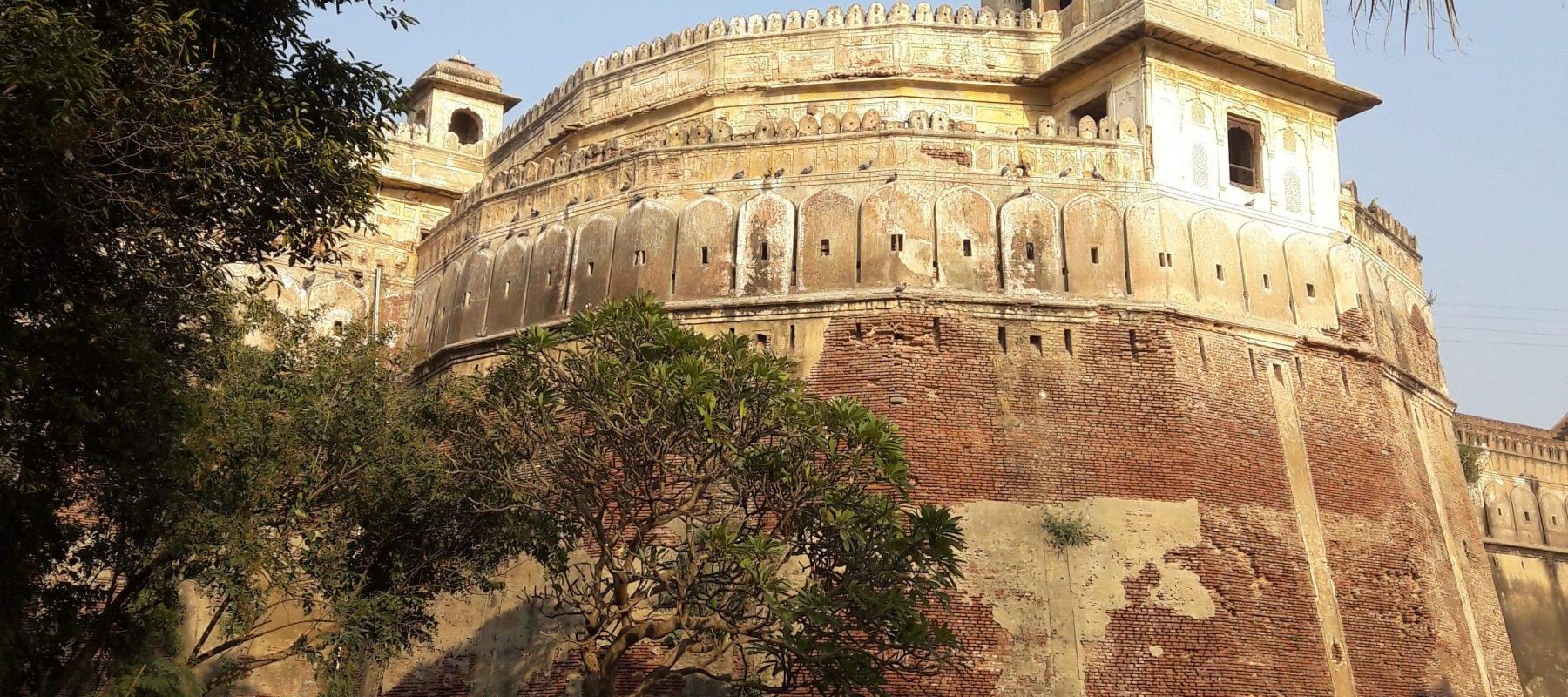The city of Patiala was established by Baba Ala Singh, the leader of the Phulkian Misl, who built a mud fort in 1764 which was later rebuilt by baked bricks and named Qila Mubarak. This fort remained the seat of the rulers of the Patiala State till 1862 and the city developed around it. The fort comprises the Qila Androon (the living area of the royal family) which also houses the Akhand Jyot (a flame that burns continuously) which was brought from the Jwala Ji Temple by Baba Ala Singh. This Jyot is believed to protect the people of Patiala from disasters and bless them with abundance. Other structures are the Durbar Hall, Ran Basa (guesthouse), remains of the Sard Khana (underground freezer) and Jalau Khana (a place to store jewellery), among others. The design of the fort has been influenced by Rajput and Mughal styles of architecture with stucco work on the doors and frescoes on the walls. The fort has two tunnels - one which connected another fort, the Bahadurgarh Fort which is around 35 km away, and another which went up to the Shahi Samadhan (the royal cremation ground). Along the outer walls of the fort, there are shops selling various goods like clothes and accessories.
The starting point of the walk will be Suhag Arts, near the main parking area and the route will be through the Adalat Bazaar which is famous for Punjabi clothes and accessories, especially Patiala salwars, phulkaris and Punjabi juttis. A few old havelis which have been turned into shops can also be spotted on the way to the Qila.
This guided tour is free.


